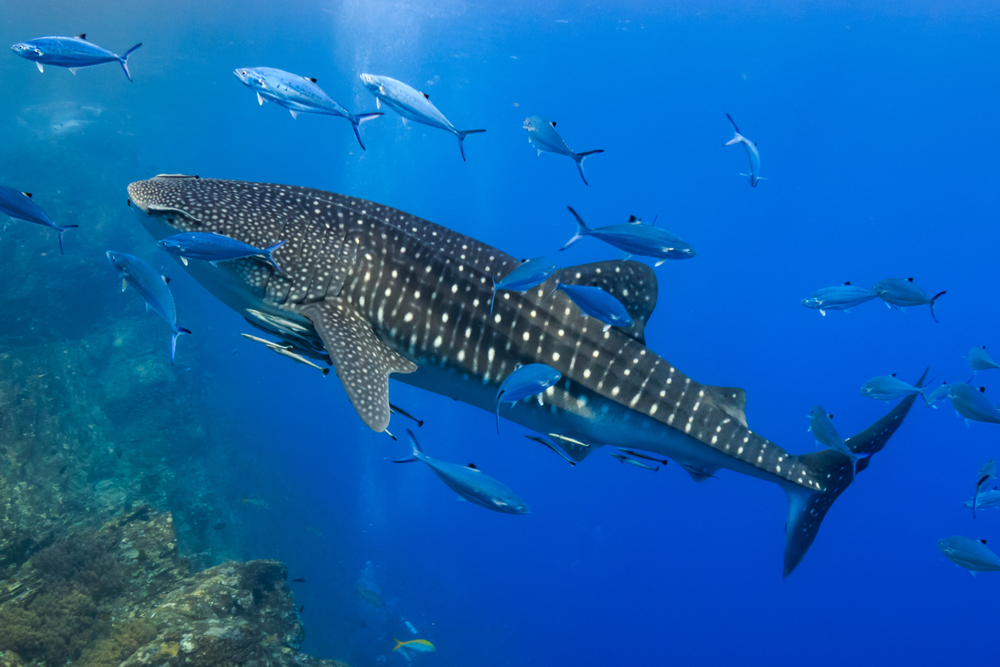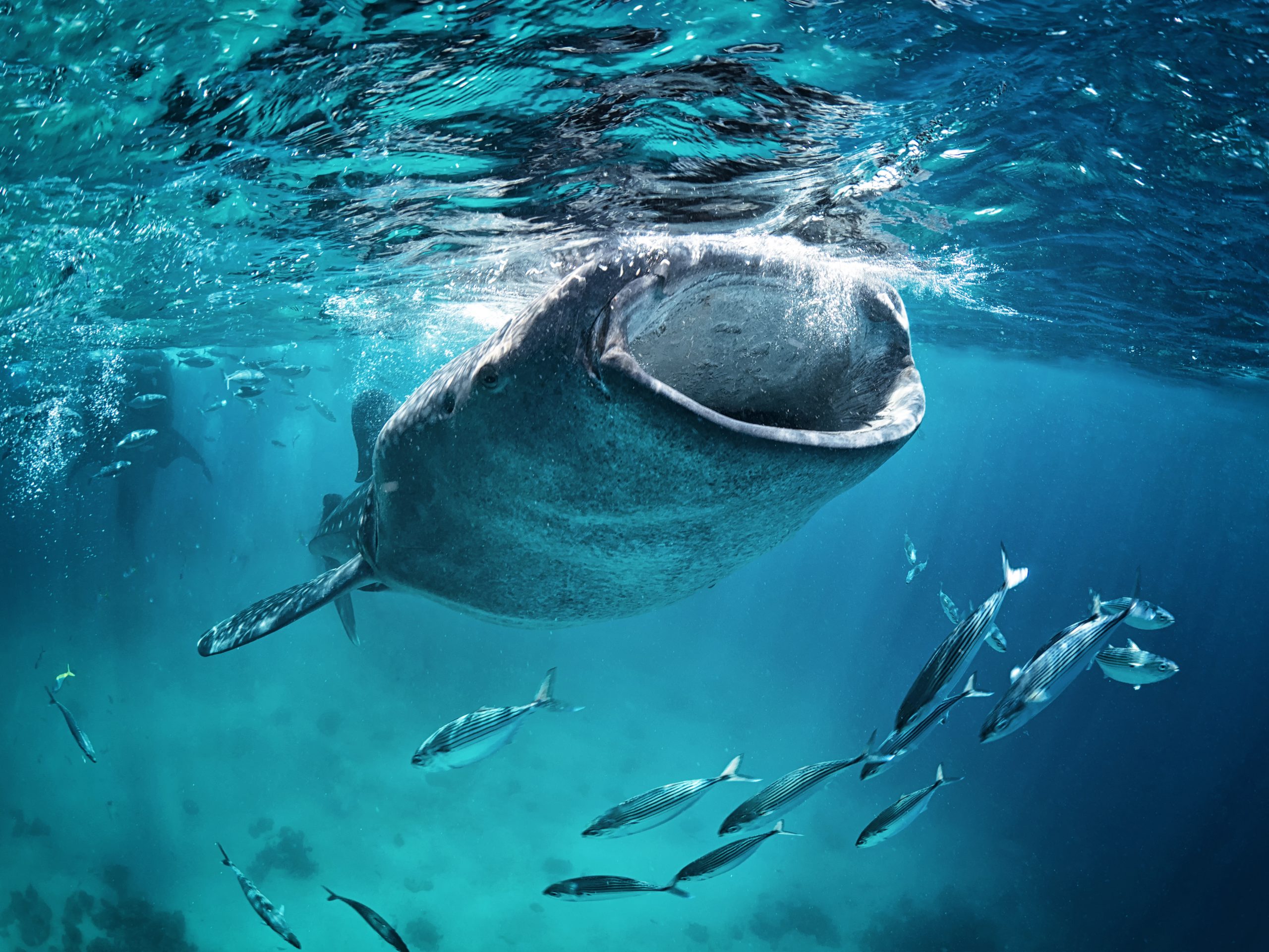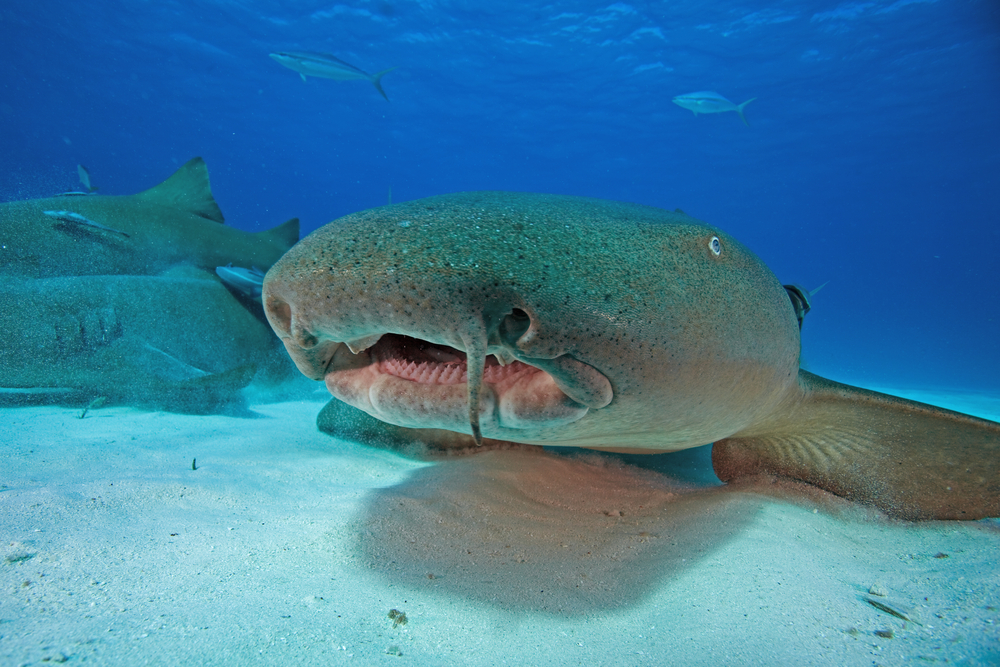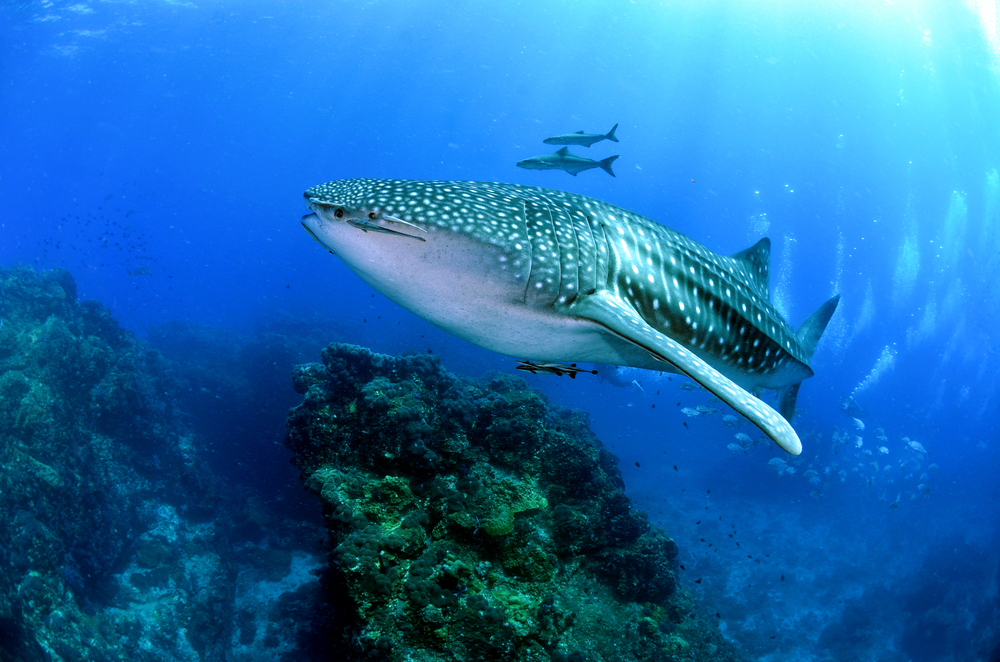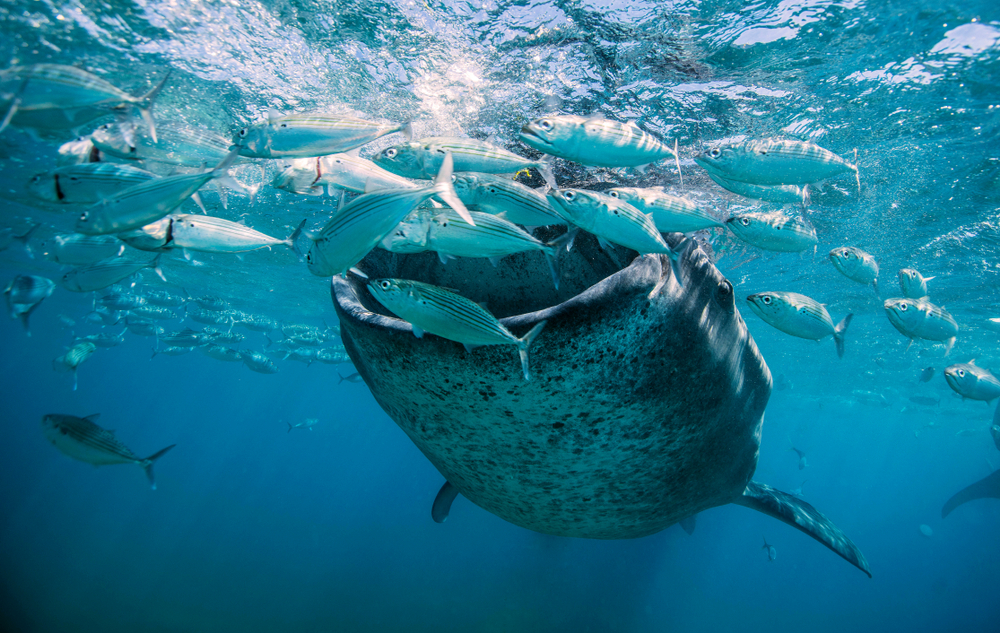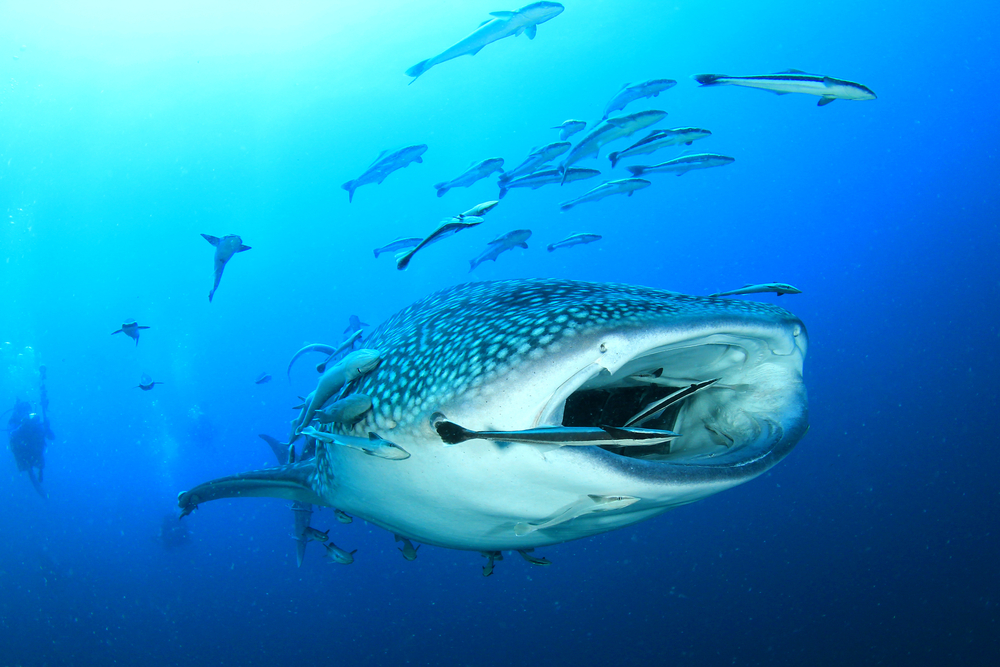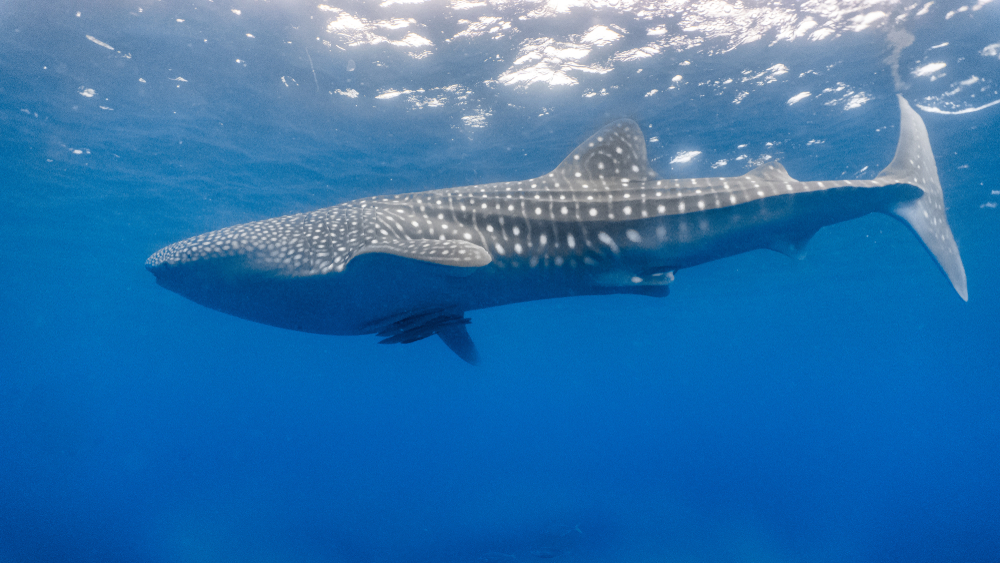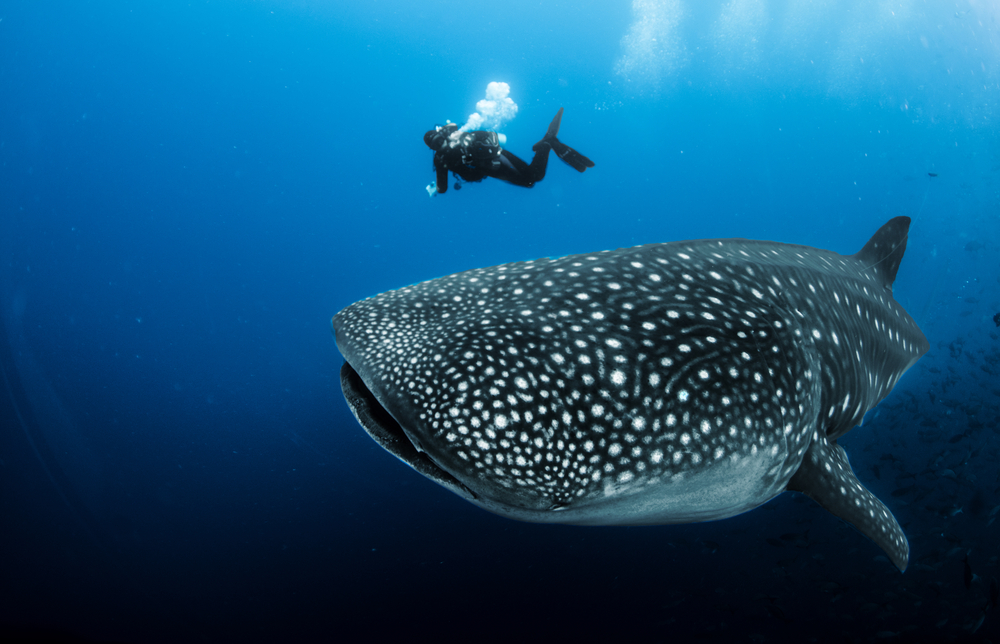Uniqueness
The whale shark (Rhincodon typus) is a remarkable and enigmatic species of shark, known for its immense size, distinctive appearance, and gentle nature. Here are some key aspects that make the whale shark unique:
Physical Characteristics: The whale shark is the largest fish species in the world, with individuals reaching lengths of up to 40 feet (12 meters) or more. They have broad, flattened heads with wide mouths that extend almost the full width of their bodies. Their bodies are covered in a unique pattern of light spots and stripes against a dark background, which is believed to be unique to each individual and can be used for identification purposes.
Filter-Feeding Adaptations: Despite their massive size, whale sharks are filter feeders, primarily consuming planktonic organisms such as krill, small fish, and tiny crustaceans. They have specialized filtering structures known as gill rakers, which line their gill slits and act like sieves to trap plankton while allowing water to pass through. Whale sharks use suction to draw water into their mouths, then expel it through their gills, filtering out food particles in the process.
Global Distribution: Whale sharks are found in tropical and subtropical waters worldwide, inhabiting both coastal and open ocean environments. They are known to frequent areas with high plankton concentrations, such as coral reefs, coastal upwelling zones, and oceanic islands. Whale sharks are highly migratory and may travel thousands of miles each year in search of food, mates, or suitable breeding grounds.
Social Behavior: While whale sharks are typically solitary animals, they may occasionally aggregate in large numbers in areas with abundant food resources or during specific times of the year, such as seasonal plankton blooms or reproductive events. These aggregations provide opportunities for social interaction, mating, and possibly cooperative feeding behavior among individuals.
Reproductive Biology: Despite their large size, relatively little is known about the reproductive biology of whale sharks. They are believed to be ovoviviparous, meaning that embryos develop inside egg capsules within the mother’s body before hatching. Pregnant females have been observed with large numbers of developing embryos, suggesting that whale sharks may give birth to live young, although direct observation of this behavior is rare.
Conservation Status: While whale sharks are currently classified as vulnerable by the International Union for Conservation of Nature (IUCN), they face a range of threats from human activities, including habitat degradation, pollution, bycatch in fisheries, and direct exploitation for their meat, fins, and oil. Conservation efforts focused on protecting critical habitats, regulating fisheries, and promoting responsible ecotourism practices are essential for ensuring the long-term survival of whale shark populations.
Ecotourism and Research Opportunities: Whale sharks are popular attractions for eco-tourists and scuba divers, who seek out opportunities to swim alongside these gentle giants in their natural habitat. These interactions provide valuable opportunities for scientists and researchers to study whale shark behavior, ecology, and conservation needs, while also raising awareness about the importance of protecting these magnificent creatures and their ocean habitats.
The whale shark’s unique combination of size, feeding behavior, global distribution, and conservation significance make it a truly extraordinary and iconic species of the world’s oceans. Studying and conserving these majestic animals is essential for maintaining the health and biodiversity of marine ecosystems and ensuring their continued survival for future generations to enjoy.






























































